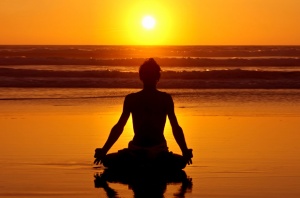
Inside Yoga 205 (30/6/2017)
Most of us want everything in our life to predictable, stable, steady, safe and other such descriptions of life which doesn’t scare us, worry us, or make us nervous… yet life continues to surprise us, shock us and change the way we see our life, so why do we want something that never happens?
Perhaps it is in our nature and instinct to crave for the comfortable feeling of safety and security, but what is clear is that things do change, just when we are getting comfortable something happens to shake us off our comfortable chair of life.
The point I would like to make is that if we are always being surprised by change in our life, why not be prepared for it, and learn how to ride the waves of change which keep rolling into and through our lives?
What I am writing about touches upon something called, the chaos theory: the idea that unpredictable things will happen, so be prepared to be surprised. Chaos Theory deals with nonlinear things that are effectively impossible to predict or control, like turbulence, weather, the stock market, our brain states, and so forth; though it is worth pointing out that this theory does recognise the existence of patterns, loops, repetition and so on.
I have been thinking about chaos theory recently because the last few years have thrown up surprises, Brexit, Trump etc, and continuing events keep adding to our collective worries that perhaps the world is on chaos?
There are patterns, because history shows us that we have repeatedly experienced major changes, disasters and downright baffling events, and somehow we have muddled through and come out the other end. Yet we still show that as humans we continue to hate the unpredictable and at times don’t know how to cope with it.
So what has this got to do with Yoga and Buddhism you might be thinking?
The Buddha’s principle teaching was that all things will change, in other words everything is impermanent. Learning to cope with and live with change is the bedrock of Buddhist practice, and I would also add yoga (note, that the Buddha before his enlightenment was a practising yogi). The practice of meditation is designed to reveal to us the nature of what it is to be us, and with practice to notice how everything keeps changes – watch your mind in meditation for a while and you will soon see how change is a constant (if that is possible). With continued practice we learn to see how best to respond to the conditions around us externally and crucially within – our thoughts and our body.
We teach ourselves how to learn to let events of change and unpredictability, chaos in other words, slip off our backs like water off a duck’s back. We teach ourselves how to be calm and clear in the face of adversity and challenges.
And importantly, it is not teaching us to ignore or run away, but to engage in whatever it is that is causing stress, worry or anxiety in our lives, and learn how to respond to events with clarity, equanimity and strength. I do accept that sometimes we just feel we cannot cope, but if we need to get on (which hopefully we all will need to eventually), we will still have to stand up again, brush ourselves down and move on.
The yoga practice works the same way: the physical body wants to be healthy enough to deal with the waves of chaos that might flow our way, as much as the meditation practice gives us the will power and clarity to see things as they are and to have a better, clearer, image of what options and paths lie ahead.
The world is not perfect, nor will our practice be perfect, but we can keep trying our best, making the best choices that we can, and move forward.
Chaos doesn’t have to be seen as a scary unwanted event, but just what is to be expected – in other words, expect to be surprised, so then we are prepared.
Meditation teaches us how random our thoughts can be; as many of us who meditate will have seen, our mind can be very unpredictable with surprising thoughts popping up – some welcome, enlightening even while some unwanted and even embarrassing.
We learn to see our thoughts for what they are, whether they are useful answers to things in our life or ridiculous and crazy thoughts, with our response being the same, we return to the focus on our breathing and silence without letting ourselves be furthered distracted.
Our practice can be seen as reflection of the world beyond our mind: what appears to be chaos often has patterns, can be understood and even controlled to a certain extent – we learn to ride the waves of chaos and confusion. And through meditation we learn to deal with and understand the outside world, with all its madness and craziness, whether it’s our own household chaos or watching the world beyond our doors and feeling puzzled and worried by events.
The Dalai Lama, the Tibetan Buddhist and spiritual leader of the Tibetan population, says that meditation is training us to have “mental immunity”, for example, he says it is “learning to avoid destructive emotions and to develop the positive ones.” It is a way of saying that through meditation we strengthen our minds against things that could harm us, and in this case, it can help us deal with the worries of a world in apparent chaos.
Meditate upon this and see what comes up.
Any questions or comments contact me via the blog reply panel below or email gary@yogabristol.co.uk
If you enjoyed this blog please share it with others… on social media or even via the ancient practice of face-to-face conversation
